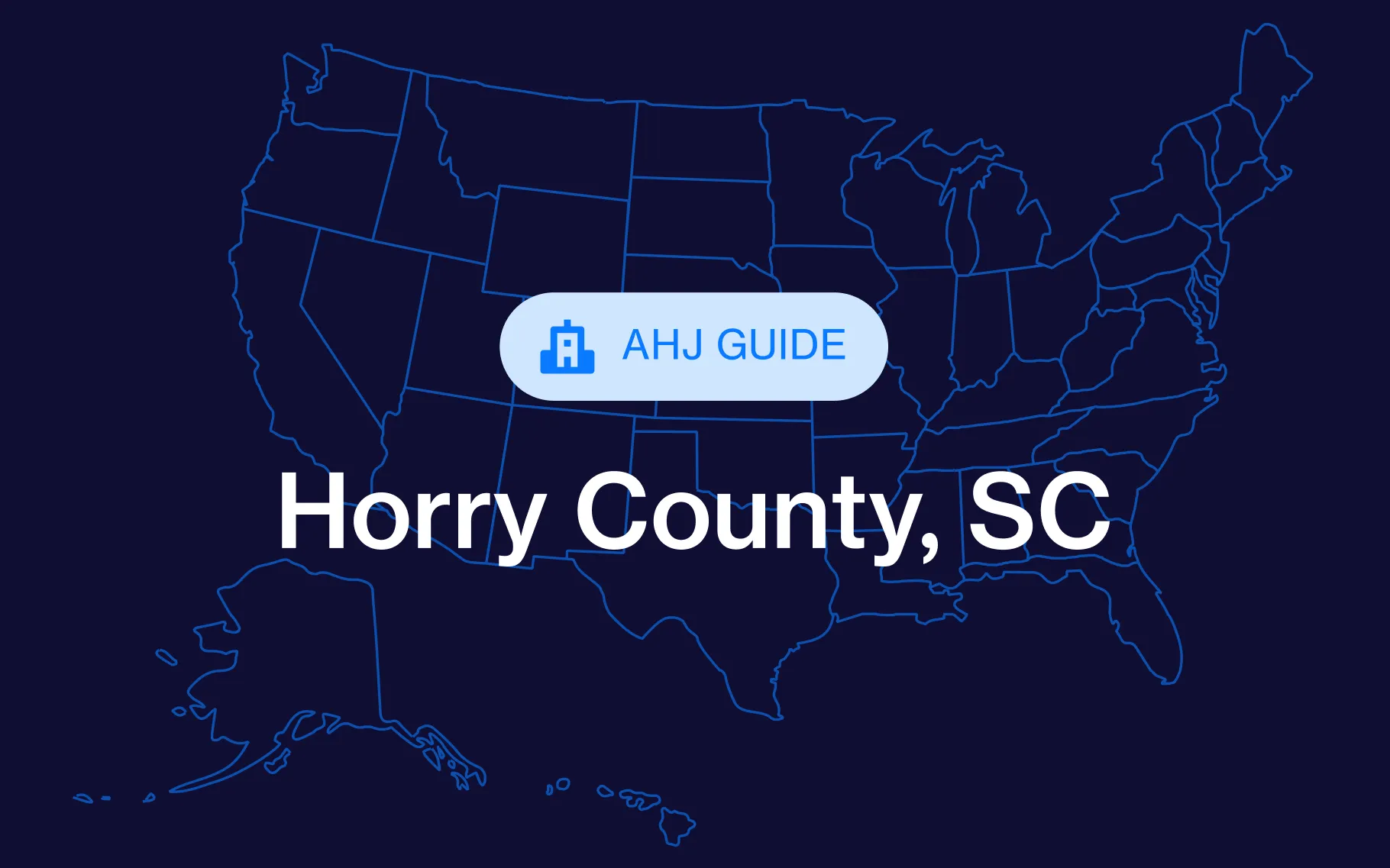South Carolina’s growing population, coastal development, and expanding industrial base mean construction is booming — but permitting is managed locally, with rules that vary from one city or county to another. While the state provides a framework through its building codes, it’s the municipal and county building departments that ultimately issue permits, conduct plan reviews, and oversee inspections.
If you’re planning projects in the Palmetto State, here’s what you need to know about navigating the permit process.
Who issues building permits in South Carolina?
Permits are issued by local city and county building departments.
For example:
- In Charleston, building permits are managed by the Department of Planning, Preservation & Sustainability.
- In Columbia, the Building Inspections & Permits Division oversees permitting for residential and commercial projects.
- In Greenville County, permitting is handled by the Building Safety Department.
At the state level, the South Carolina Building Codes Council (SCBCC) — part of the Department of Labor, Licensing, and Regulation — adopts building codes based on the International Code Council (ICC). Local jurisdictions enforce these codes and may also adopt supplemental ordinances.
When do you need a building permit in South Carolina?
In South Carolina, a permit is typically required for:
- New residential or commercial construction
- Additions, remodels, or structural modifications
- Electrical, plumbing, and mechanical work
- Roof replacements, siding, window, or door changes (if structural or energy performance is affected)
- Decks, garages, and accessory structures over certain thresholds
- Demolition or relocation of structures
Permits are not usually required for routine maintenance or cosmetic updates such as painting, flooring, or cabinetry. Some jurisdictions also exempt smaller sheds, fences under a set height, or non-structural repairs. Always confirm with the local building department, since rules vary.
South Carolina building permit requirements
Permit applications typically include:
- Completed application form from the local jurisdiction
- Construction drawings: site plan, floor plans, elevations, and structural details
- Engineering or architect-stamped plans for structural or commercial projects
- Proof of contractor licensing (South Carolina requires contractors to be licensed by the Department of Labor, Licensing, and Regulation for most building work)
- Energy code compliance documents (the state enforces the South Carolina Energy Conservation Code)
- Zoning approvals or site plan reviews for certain projects
For example, Charleston requires digital plan submissions for larger projects, while smaller counties may still accept paper submittals.
South Carolina building permit costs
Permit fees are set by local governments and typically based on:
- Valuation of construction (total labor and material cost)
- Square footage of new construction or additions
- Flat rates for trade permits (electrical, plumbing, mechanical, roofing, etc.)
- Plan review and inspection fees, often charged separately
In Greenville County, fees for building permits are tied to project valuation, while Columbia publishes a detailed fee schedule for both building and trade permits. Charleston also assesses plan review fees in addition to base permit fees.
Unique considerations when permitting in South Carolina
Hurricane and floodplain requirements
Coastal regions are subject to strict wind load and floodplain building standards, especially in FEMA Special Flood Hazard Areas.
Seismic design zones
Parts of the state, particularly around Charleston, fall under higher seismic risk categories and require special structural considerations.
Historic preservation
Cities like Charleston and Beaufort have historic preservation boards that must review exterior changes in designated historic districts.
Energy code enforcement
The state enforces energy efficiency standards aligned with the ICC’s International Energy Conservation Code (IECC).
How to get a building permit in South Carolina
While procedures vary locally, the typical steps look like this:
- Identify jurisdiction:
Confirm whether the project falls under city or county authority. - Check permit requirements:
Review local rules and exemptions to confirm whether a permit is needed. - Prepare documentation:
Assemble construction drawings, stamped plans (if required), contractor license info, energy compliance paperwork, and zoning approvals. - Submit the application:
File online or at the building department office. Larger cities often use e-permitting systems. - Plan review:
Local officials review the application for compliance with building, zoning, fire, and energy codes. - Address corrections:
Respond promptly to any reviewer comments or required revisions. - Pay fees and obtain permit:
Once approved and fees are paid, the permit is issued. - Schedule inspections:
Inspections are required at key stages such as foundation, framing, mechanical, electrical, plumbing, and final occupancy.
Timelines vary widely. Small trade permits may be issued in a day or two, while larger residential and commercial projects may take weeks or months depending on jurisdictional workload.








